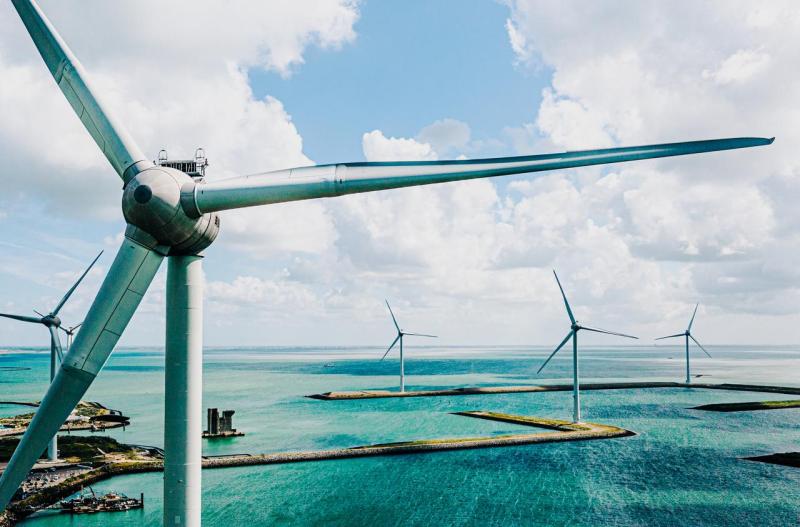Global Environmental and Energy Policy: Sustainability at Telefónica
Telefónica reaffirms its sustainable leadership with the new Global Environment and Energy Policy, consolidating key commitments towards a greener future.

At Telefónica, we reaffirm our commitments to the environment and energy efficiency with the recent approval of our Global Environmental and Energy Policy. This update, in compliance with international certification standards (ISO 14001:2015 and ISO 50001:2018), consolidates our environmental and energy strategy within a global framework that encompasses all levels of our operations.
Approved in December 2024, this Global Policy reflects our commitment to minimising negative impacts on the environment while maximising the transformative potential of digitalisation. Its implementation aims not only to comply with regulatory requirements, but also to have a positive impact on society and the planet.
This policy is the result of integrating the previous Environmental and Energy Management policies, thus consolidating our vision and efforts towards more efficient environmental and energy management. To learn more about this updated version, we invite you to watch the video:
Key Global Policy Commitments: Towards a more sustainable Telefónica
Our Global Environment and Energy Policy provides a common framework for defining specific objectives that reinforce our commitment to sustainability:
1. Cimate change: Net Zero emissions by 2040
We have set ourselves the ambitious goal of achieving net zero emissions by 2040, including our value chain. To achieve this, the following commitments stand out:
- Decarbonising our operations and advancing the use of renewable energy.
- Managing climate risks and seizing opportunities linked to climate change.
- Maintaining a complete and transparent Greenhouse Gas (GHG) emissions inventory, covering scopes 1, 2 and 3.
- Driving innovative measures and offseting/neutralising residual emissions as established.
- Reducing the impact of refrigerant gases, moving towards more sustainable alternatives.
- Incorporating energy and carbon cost internalisation criteria into our decisions, such as Total Cost of Ownership (TCO).
2. Circular Economy: Zero Waste
With the goal of being a Zero Waste company, we are committed to promoting the reuse and recycling of equipment. Our commitments include:
- Decarbonising our operations and advancing the use of renewable energy.
- Managing climate risks and seizing opportunities linked to climate change.
- Maintaining a complete and transparent Greenhouse Gas (GHG) emissions inventory, covering scopes 1, 2 and 3.
- Driving innovative measures and offseting/neutralising residual emissions as established.
- Reducing the impact of refrigerant gases, moving towards more sustainable alternatives.
- Incorporating energy and carbon cost internalisation criteria into our decisions, such as Total Cost of Ownership (TCO).
3. Environmental management and other aspects
Protecting the environment is a fundamental objective that reflects our ongoing commitment to assess and minimise the impact of our activities on the environment. In addition, the following are highlighted:
- Pollution prevention: Assessment of impacts, dependencies, risks and opportunities related to nature, to minimise environmental impact and promote sustainable practices in our operation and roll-outs.
- Biodiversity protection and efficient water management: Focus on preserving ecosystems, particularly endangered species, and improving water management in our infrastructure.
- Regulatory compliance and due diligence: We ensure compliance with current legislation and adopt international standards, in line with the precautionary principle and life cycle, including the Corporate Sustainability Due Diligence Directive (CSDDD).
- Environmental Management Systems (EMSs) and Energy Management Systems (EnMSs): Implementation and maintenance of systems to reduce impacts, optimise risk management and improve energy efficiency in processes.
- Innovation in sustainable products and services: Development of solutions that, from their design onwards, approach challenges such as climate change, circular economy and biodiversity loss.
- Collaboration and awareness-raising: We encourage partnerships with organisations, governments, and communities to promote a circular and decarbonised economy, while also raising employee and customer awareness of sustainability practices.
Implementation and supervision
Telefónica’s Global Sustainability Department (ESG) leads the implementation of this Global Environment and Energy Policy, while the local teams are responsible for adapting it to the specific needs of each country. Regarding the implementation of specific Energy Management objectives, leadership is shared with the Telefónica, S.A. GCTIO Area. The policy is also periodically monitored in accordance with the evolution of the Company’s sustainability strategy. Environmental and energy performance is supervised at least once a year by the Board’s Sustainability and Regulation Committee.
Entry into force and scope
The Global Environment and Energy Policy came into effect following its approval by the Board of Directors in December 2024, replacing the previous regulations, specifically the Environmental Policy approved on 30 January 2019 (3rd edition) and the Energy Management Policy approved on 26 January 2022 (2nd edition).
Its scope is global, applying to all Telefónica Group companies, ensuring efficient coordination without compromising the autonomy of each subsidiary.
This policy reinforces our sustainability strategy, strengthening the integration of environmental and energy management criteria across all our operations.
In conclusion: digitalisation and sustainability as drivers of change
At Telefónica, we understand that the sustainability of our society and the planet depends on concrete actions aligned with global challenges. Our Global Environment and Energy Policy not only represents a tangible step forward in our determination to lead on sustainability but also positions digitalisation as a key tool to overcome environmental challenges. We take responsibility for leading this change, promoting a circular economy, reducing carbon emissions, and working together to build a greener future. We encourage you to read the full document in the following link:
Related Content
Communication
Contact our communication department or requests additional material.


